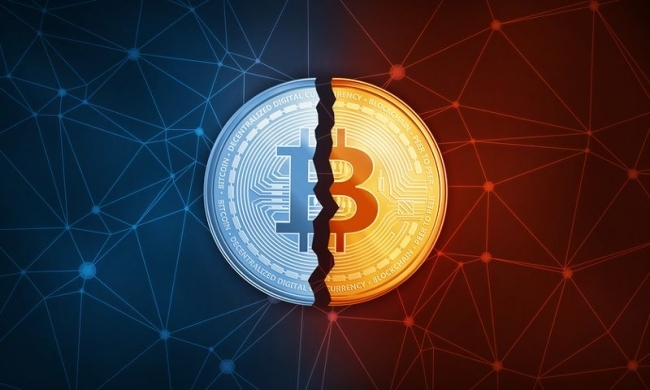What is Bitcoin Halving? What Do New Zealand Investors Need to Know in 2022
Bitcoin is programmed to reduce its supply rate by half every four years. What does this mean to NZ investors?


Bitcoin Halving is a fundamental part of Bitcoin’s code, where approximately every four years (or every 210,000 blocks), the Bitcoin blockchain programmatically halves the rate at which Bitcoin gets released into circulation.
The rate at which Bitcoin gets released (or issued) can also be thought of as Bitcoin’s own inflation rate — after each successive Bitcoin Halving, the inflation rate gets reduced by half.
Wait, there is inflation in Bitcoin?
Now, inflation isn’t in itself a bad thing.
New Bitcoin must be released through block rewards, in order to reward miners for securing the network. An increasing supply of Bitcoin means that more people can own Bitcoin without competing too much for it, keeping the value of Bitcoin relatively stable.
One of the main value propositions of Bitcoin is that it is a continuously scarce asset. Bitcoin is similar to gold in this respect. As we strip the Earth of gold, it becomes less common and harder to come by, thus increasing its price in the long-term, provided that the demand for gold hasn’t been reduced.
If we apply the same logic to Bitcoin, we may find that the number of Bitcoins will not ever catch up and match the demand for Bitcoin. As a result, theoretically, Bitcoin’s price will continue to rise in the long-term.
When was the last Bitcoin Halving?
On 12 May 2020, the second Bitcoin Halving occurred. The Bitcoin blockchain reduces the block reward rate of Bitcoin from 12.5 to 6.25 Bitcoin per approximately 10 minutes (a single Bitcoin block time).
The next one will occur around 4 May 2024. Note that the actual date of the Fourth Bitcoin Halving may lie before or after this date. This is because Bitcoin doesn’t keep track of time the same way that we do.
As prefaced above, Bitcoin’s issuance rate halves at every 210,000 blocks, and each block gets created on average every 10 minutes. Sometimes a Bitcoin mining machine gets its reward in less than 10 minutes, but sometimes the network could even go on for a whole day before any mining machine gets rewarded.
(In the long-term, the Bitcoin algorithm adjusts the mining difficulty so that it would take 10 minutes on average for a mining machine to get block rewards).
Why does the Bitcoin Halving matter?
We may estimate that, from an economics perspective, that over the long-term, the Bitcoin price will increase due to an imbalance in supply and demand.
However, some analysts like to speculate on the price movements of Bitcoin before, during, and after each successive Bitcoin Halving.
Bitcoin Halving chart explained
Look at the chart below. Don’t focus too much on the exact prices reached by Bitcoin, but instead on the price movement pattern.

This chart isn’t the true price chart of Bitcoin. Instead, the Y-axis (the line that shows the price levels) is modified to show the lower price ranges as clear as possible (this chart is logarithmic).
Looking at this chart, you can see that the first halving drove the price to higher levels, to a new all-time high. Following that is a bear market where the price of Bitcoin attempted to stabilise at a higher but less volatile price range.
This continued on until the second halving, which tend to repeat the pattern as seen after the first halving.
What happened after the Third Bitcoin Halving?
The above chart is quite an old one. Fortunately we have the two years of data on Bitcoin’s historical price in hand. Take a look at the chart below.

After the third halving, the price of Bitcoin went up considerably, and it follows the same pattern as the first and second halving. At the time of writing, the crypto market is experiencing a bear market as it “cools off” from the most recent halving event, where investors were all too keen about getting some Bitcoins themselves.
Can we use the Bitcoin Halving chart to predict Bitcoin’s future price?
It may be tempting to conclude that Bitcoin Halving is a strong driver of price movements, but it won’t be fair to look at it in isolation. Could there be other factors that coincide with Bitcoin’s price action after each halving?
We can try to compare Bitcoin’s price chart with the S&P 500 index of most valuable US companies. As Bitcoin is a software, it may be fitting to compare that to a US stock index that contains some of the world’s most profitable tech companies.

While there are no links between Bitcoin’s upward price movement and the S&P 500 index at the same points in time, there interesting links that we shouldn’t ignore.
During 2015-2016 and 2019-2020, the US stock market experienced a fair number of shocks and downturns, which coincide with Bitcoin’s bear market cycle.
A recurring phenomenon in the past couple of years is that large institutional investors have treated Bitcoin like a risky high-growth stock. Fast forward to 2022, some of these institutional investors are taking their risks off of Bitcoin and their high-growth stock holdings, resulting in very steep drop in stock and Bitcoin prices.
We may conclude that while Bitcoin Halving have historically pushed the Bitcoin price up, what follows can be anyone’s guess. Whether the historical bear market cycle happens because of a crypto market cool-down, or something even more, we can never be really sure.
What can we learn from Bitcoin’s past?
What’s certain about Bitcoin is that it is a volatile asset, and that the price can go down at anytime, either due to the influence of the Bitcoin market in isolation, or in part by the global economy. We cannot rely on any single indicator, and past performances do not guarantee future outcomes.
However, what’s important is that you fully understand the risks (and potential reward) of buying, holding, or selling Bitcoin.
Share to
Stay curious and informed
Your info will be handled according to our Privacy Policy.
Make sure to follow our Facebook, Twitter, Instagram, and YouTube channel to stay up-to-date with Easy Crypto!
Also, don’t forget to subscribe to our monthly newsletter to have the latest crypto insights, news, and updates delivered to our inbox.
Disclaimer: Information is current as at the date of publication. This is general information only and is not intended to be advice. Crypto is volatile, carries risk and the value can go up and down. Past performance is not an indicator of future returns. Please do your own research.
Last updated February 2, 2024





